Swift 5
Well Matt Price's answer is perfectly fine for passing data, but I
am going to rewrite it, in the latest Swift version because I believe new
programmers find it quit challenging due to new syntax and
methods/frameworks, as original post is in Objective-C.
There are multiple options for passing data between view controllers.
- Using Navigation Controller Push
- Using Segue
- Using Delegate
- Using Notification Observer
- Using Block
I am going to rewrite his logic in Swift with the latest iOS framework
Passing Data through Navigation Controller Push: From ViewControllerA to ViewControllerB
Step 1. Declare variable in ViewControllerB
var isSomethingEnabled = false
Step 2. Print Variable in ViewControllerB' ViewDidLoad method
override func viewDidLoad() {
super.viewDidLoad()
// Print value received through segue, navigation push
print("Value of 'isSomethingEnabled' from ViewControllerA: ", isSomethingEnabled)
}
Step 3. In ViewControllerA Pass Data while pushing through Navigation Controller
if let viewControllerB = UIStoryboard(name: "Main", bundle: nil).instantiateViewController(withIdentifier: "ViewControllerB") as? ViewControllerB {
viewControllerB.isSomethingEnabled = true
if let navigator = navigationController {
navigator.pushViewController(viewControllerB, animated: true)
}
}
So here is the complete code for:
ViewControllerA
import UIKit
class ViewControllerA: UIViewController {
override func viewDidLoad() {
super.viewDidLoad()
}
// MARK: Passing data through navigation PushViewController
@IBAction func goToViewControllerB(_ sender: Any) {
if let viewControllerB = UIStoryboard(name: "Main", bundle: nil).instantiateViewController(withIdentifier: "ViewControllerB") as? ViewControllerB {
viewControllerB.isSomethingEnabled = true
if let navigator = navigationController {
navigator.pushViewController(viewControllerB, animated: true)
}
}
}
}
ViewControllerB
import UIKit
class ViewControllerB: UIViewController {
// MARK: - Variable for Passing Data through Navigation push
var isSomethingEnabled = false
override func viewDidLoad() {
super.viewDidLoad()
// Print value received through navigation push
print("Value of 'isSomethingEnabled' from ViewControllerA: ", isSomethingEnabled)
}
}
Passing Data through Segue: From ViewControllerA to ViewControllerB
Step 1. Create Segue from ViewControllerA to ViewControllerB and give Identifier = showDetailSegue in Storyboard as shown below
Step 2. In ViewControllerB Declare a viable named isSomethingEnabled and print its value.
Step 3. In ViewControllerA pass isSomethingEnabled's value while passing Segue
So here is the complete code for:
ViewControllerA
import UIKit
class ViewControllerA: UIViewController {
override func viewDidLoad() {
super.viewDidLoad()
}
// MARK: - - Passing Data through Segue - -
@IBAction func goToViewControllerBUsingSegue(_ sender: Any) {
performSegue(withIdentifier: "showDetailSegue", sender: nil)
}
// Segue Delegate Method
override func prepare(for segue: UIStoryboardSegue, sender: Any?) {
if (segue.identifier == "showDetailSegue") {
let controller = segue.destination as? ViewControllerB
controller?.isSomethingEnabled = true//passing data
}
}
}
ViewControllerB
import UIKit
class ViewControllerB: UIViewController {
var isSomethingEnabled = false
override func viewDidLoad() {
super.viewDidLoad()
// Print value received through segue
print("Value of 'isSomethingEnabled' from ViewControllerA: ", isSomethingEnabled)
}
}
Passing Data through Delegate: From ViewControllerB to ViewControllerA
Step 1. Declare Protocol ViewControllerBDelegate in the ViewControllerB file, but outside the class
protocol ViewControllerBDelegate: NSObjectProtocol {
// Classes that adopt this protocol MUST define
// this method -- and hopefully do something in
// that definition.
func addItemViewController(_ controller: ViewControllerB?, didFinishEnteringItem item: String?)
}
Step 2. Declare Delegate variable instance in ViewControllerB
var delegate: ViewControllerBDelegate?
Step 3. Send data for delegate inside viewDidLoad method of ViewControllerB
delegate?.addItemViewController(self, didFinishEnteringItem: "Data for ViewControllerA")
Step 4. Confirm ViewControllerBDelegate in ViewControllerA
class ViewControllerA: UIViewController, ViewControllerBDelegate {
// to do
}
Step 5. Confirm that you will implement a delegate in ViewControllerA
if let viewControllerB = UIStoryboard(name: "Main", bundle: nil).instantiateViewController(withIdentifier: "ViewControllerB") as? ViewControllerB {
viewControllerB.delegate = self//confirming delegate
if let navigator = navigationController {
navigator.pushViewController(viewControllerB, animated: true)
}
}
Step 6. Implement delegate method for receiving data in ViewControllerA
func addItemViewController(_ controller: ViewControllerB?, didFinishEnteringItem item: String?) {
print("Value from ViewControllerB's Delegate", item!)
}
So here is the complete code for:
ViewControllerA
import UIKit
class ViewControllerA: UIViewController, ViewControllerBDelegate {
override func viewDidLoad() {
super.viewDidLoad()
}
// Delegate method
func addItemViewController(_ controller: ViewControllerB?, didFinishEnteringItem item: String?) {
print("Value from ViewControllerB's Delegate", item!)
}
@IBAction func goToViewControllerForDelegate(_ sender: Any) {
if let viewControllerB = UIStoryboard(name: "Main", bundle: nil).instantiateViewController(withIdentifier: "ViewControllerB") as? ViewControllerB {
viewControllerB.delegate = self
if let navigator = navigationController {
navigator.pushViewController(viewControllerB, animated: true)
}
}
}
}
ViewControllerB
import UIKit
//Protocol decleare
protocol ViewControllerBDelegate: NSObjectProtocol {
// Classes that adopt this protocol MUST define
// this method -- and hopefully do something in
// that definition.
func addItemViewController(_ controller: ViewControllerB?, didFinishEnteringItem item: String?)
}
class ViewControllerB: UIViewController {
var delegate: ViewControllerBDelegate?
override func viewDidLoad() {
super.viewDidLoad()
// MARK: - - - - Set Data for Passing Data through Delegate - - - - - -
delegate?.addItemViewController(self, didFinishEnteringItem: "Data for ViewControllerA")
}
}
Passing Data through Notification Observer: From ViewControllerB to ViewControllerA
Step 1. Set and post data in the notification observer in ViewControllerB
let objToBeSent = "Test Message from Notification"
NotificationCenter.default.post(name: Notification.Name("NotificationIdentifier"), object: objToBeSent)
Step 2. Add Notification Observer in ViewControllerA
NotificationCenter.default.addObserver(self, selector: #selector(self.methodOfReceivedNotification(notification:)), name: Notification.Name("NotificationIdentifier"), object: nil)
Step 3. Receive Notification data value in ViewControllerA
@objc func methodOfReceivedNotification(notification: Notification) {
print("Value of notification: ", notification.object ?? "")
}
So here is the complete code for:
ViewControllerA
import UIKit
class ViewControllerA: UIViewController{
override func viewDidLoad() {
super.viewDidLoad()
// Add observer in controller(s) where you want to receive data
NotificationCenter.default.addObserver(self, selector: #selector(self.methodOfReceivedNotification(notification:)), name: Notification.Name("NotificationIdentifier"), object: nil)
}
// MARK: Method for receiving Data through Post Notification
@objc func methodOfReceivedNotification(notification: Notification) {
print("Value of notification: ", notification.object ?? "")
}
}
ViewControllerB
import UIKit
class ViewControllerB: UIViewController {
override func viewDidLoad() {
super.viewDidLoad()
// MARK:Set data for Passing Data through Post Notification
let objToBeSent = "Test Message from Notification"
NotificationCenter.default.post(name: Notification.Name("NotificationIdentifier"), object: objToBeSent)
}
}
Passing Data through Block: From ViewControllerB to ViewControllerA
Step 1. Declare block in ViewControllerB
var authorizationCompletionBlock:((Bool)->())? = {_ in}
Step 2. Set data in block in ViewControllerB
if authorizationCompletionBlock != nil
{
authorizationCompletionBlock!(true)
}
Step 3. Receive block data in ViewControllerA
// Receiver Block
controller!.authorizationCompletionBlock = { isGranted in
print("Data received from Block is: ", isGranted)
}
So here is the complete code for:
ViewControllerA
import UIKit
class ViewControllerA: UIViewController {
override func viewDidLoad() {
super.viewDidLoad()
}
// MARK:Method for receiving Data through Block
override func prepare(for segue: UIStoryboardSegue, sender: Any?) {
if (segue.identifier == "showDetailSegue") {
let controller = segue.destination as? ViewControllerB
controller?.isSomethingEnabled = true
// Receiver Block
controller!.authorizationCompletionBlock = { isGranted in
print("Data received from Block is: ", isGranted)
}
}
}
}
ViewControllerB
import UIKit
class ViewControllerB: UIViewController {
// MARK: Variable for Passing Data through Block
var authorizationCompletionBlock:((Bool)->())? = {_ in}
override func viewDidLoad() {
super.viewDidLoad()
// MARK: Set data for Passing Data through Block
if authorizationCompletionBlock != nil
{
authorizationCompletionBlock!(true)
}
}
}
You can find complete sample Application at my GitHub Please let me know if you have any question(s) on this.
